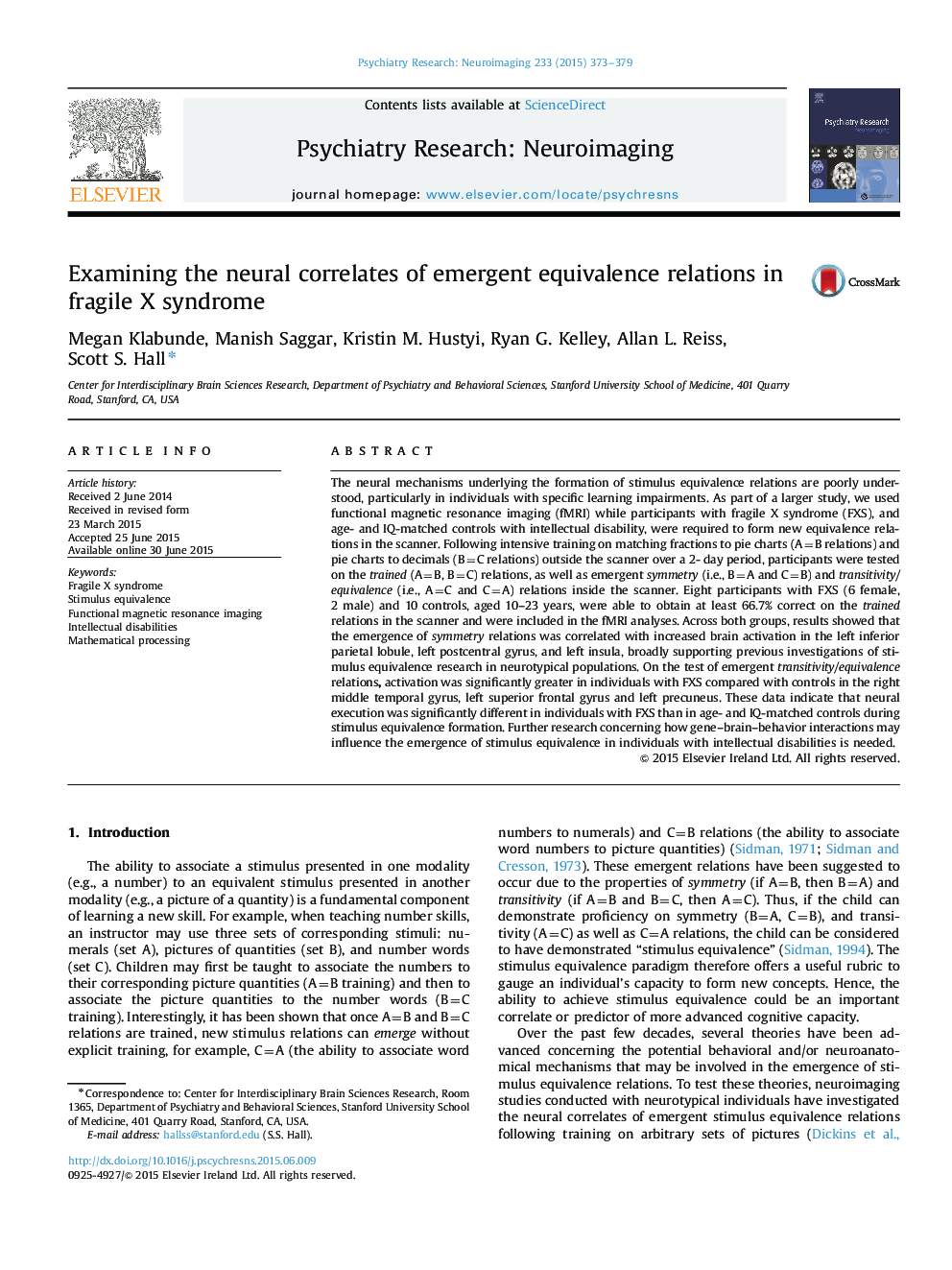| کد مقاله | کد نشریه | سال انتشار | مقاله انگلیسی | نسخه تمام متن |
|---|---|---|---|---|
| 334725 | 546653 | 2015 | 7 صفحه PDF | دانلود رایگان |

• We used fMRI to investigate the neural correlates of emergent equivalence relations.
• Participants with FXS matched fractions, pie-charts and decimal equivalences in the scanner.
• The emergence of symmetry relations was correlated with increased brain activation in specific regions.
• Activation was significantly greater in individuals with FXS compared with controls during transitivity/equivalence formation.
• Gene–brain–behavior interactions may influence the emergence of stimulus equivalence in individuals with FXS.
The neural mechanisms underlying the formation of stimulus equivalence relations are poorly understood, particularly in individuals with specific learning impairments. As part of a larger study, we used functional magnetic resonance imaging (fMRI) while participants with fragile X syndrome (FXS), and age- and IQ-matched controls with intellectual disability, were required to form new equivalence relations in the scanner. Following intensive training on matching fractions to pie charts (A=B relations) and pie charts to decimals (B=C relations) outside the scanner over a 2- day period, participants were tested on the trained (A=B, B=C) relations, as well as emergent symmetry (i.e., B=A and C=B) and transitivity/equivalence (i.e., A=C and C=A) relations inside the scanner. Eight participants with FXS (6 female, 2 male) and 10 controls, aged 10–23 years, were able to obtain at least 66.7% correct on the trained relations in the scanner and were included in the fMRI analyses. Across both groups, results showed that the emergence of symmetry relations was correlated with increased brain activation in the left inferior parietal lobule, left postcentral gyrus, and left insula, broadly supporting previous investigations of stimulus equivalence research in neurotypical populations. On the test of emergent transitivity/equivalence relations, activation was significantly greater in individuals with FXS compared with controls in the right middle temporal gyrus, left superior frontal gyrus and left precuneus. These data indicate that neural execution was significantly different in individuals with FXS than in age- and IQ-matched controls during stimulus equivalence formation. Further research concerning how gene–brain–behavior interactions may influence the emergence of stimulus equivalence in individuals with intellectual disabilities is needed.
Journal: Psychiatry Research: Neuroimaging - Volume 233, Issue 3, 30 September 2015, Pages 373–379